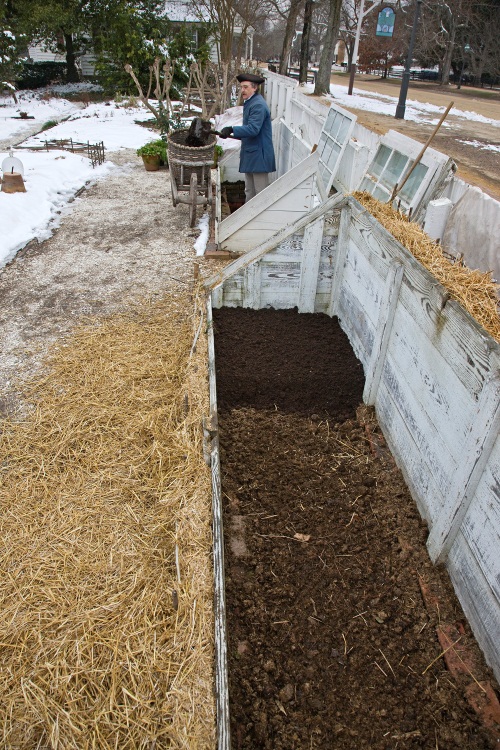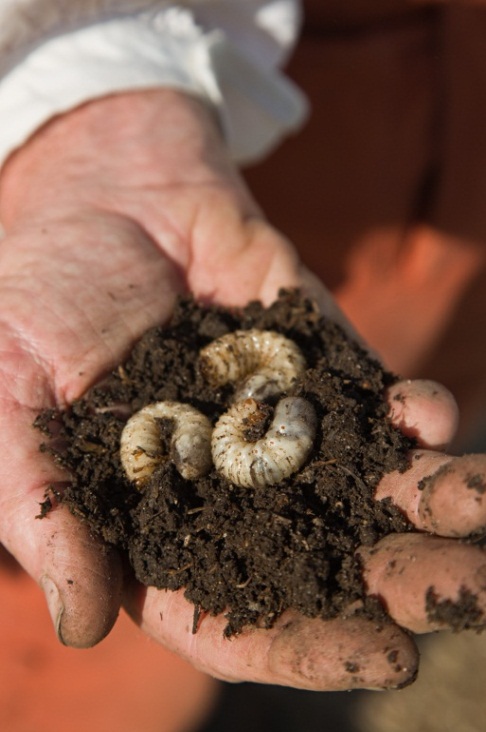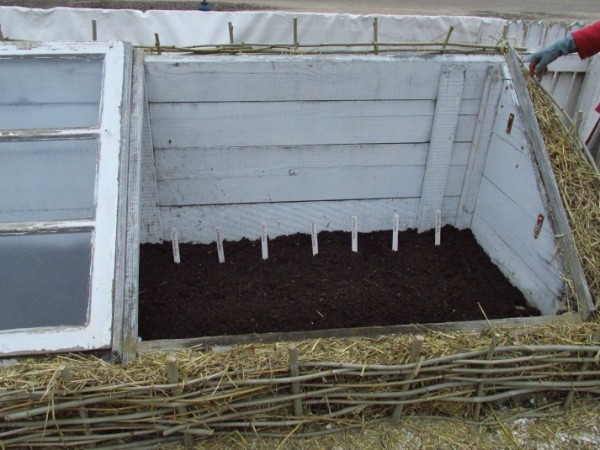 The hotbed, which was loaded with dung last week, is now ready to cap with soil.
The hotbed, which was loaded with dung last week, is now ready to cap with soil.
As Mr. Miller instructs, one must not be too hasty laying the soil on.
“When the bed is made, the Frames should be placed over it, to keep out Wet; but there should be no Earth laid upon it, till after it has been three or four Days made, and is found of a proper Temperature of Heat.”
Normally we can expect the dung to reach 120 degrees or more a couple of days after it is loaded in the bed but this week it has only reached 95 degrees. It may be that the constant wet we have experienced lately, even though the dung was stored under cover, has kept the bed somewhat wetter than what would be desired.
However, we must do with what the Lord provides and a soil temperature of 70 – 80 degrees is certainly sufficient to germinate the seeds.
The soil must be very light and friable so the best candidate is the fully composted dung from last year’s hotbed. It is well known amongst gardeners that seeds germinate more readily in an organic soil than in a mineral soil and the light texture of the compost allows oxygen to penetrate to the dung and prolong its heat.
As the compost is added to the bed, one must be diligent to find and remove the beetle larvae which were deposited as eggs in the fall. As these large grubs feed on roots, it would be very deleterious to allow them to feast upon the young transplants.
Once the soil is laid on and warmed, the bed is seeded with vegetables that will be transplanted to the garden in early April. These include four types of cabbage, cauliflower, turnip cabbage (known to modern gardeners as kohlrabi), four types of lettuce and the London flag leek.
After the seeds are planted, they are gently settled in with water that has been heated to a tepid state in a watering can placed near a fire. The sashes are then replaced and the frame is kept tightly closed until the seeds germinate.



Leave a Reply